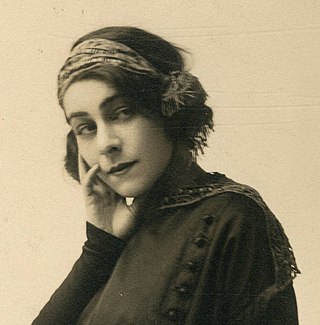
Alla Nazimova was a Russian-American actress, director, producer and screenwriter.
The Lady of the Camellias, sometimes called in English Camille, is a novel by Alexandre Dumas fils. First published in 1848 and subsequently adapted by Dumas for the stage, the play premiered at the Théâtre du Vaudeville in Paris, France, on February 2, 1852. It was an instant success. Shortly thereafter, Italian composer Giuseppe Verdi set about putting the story to music in the 1853 opera La traviata, with female protagonist Marguerite Gautier renamed Violetta Valéry.

Earle Williams was an American stage actor and film star in the silent era.

The Red Lantern is a 1919 American silent drama film starring Alla Nazimova, who plays dual roles, and directed by Albert Capellani. It is notable today for being Anna May Wong's screen debut. A single print survives in Europe with rumors of a copy at Gosfilmofond, Moscow.

On the Banks of the Wabash is a 1923 American silent rural melodrama film directed by J. Stuart Blackton and produced and distributed by his movie company, Vitagraph Studios. The film stars Mary Carr and among the cast are 14-year-old Madge Evans and James W. Morrison. The cameraman was Nicholas Musuraca. The film is very loosely based on Paul Dresser's song / poem "On the Banks of the Wabash, Far Away". The film focuses on David Hammond (Morrison), who, spurred by invention, leaves his sweetheart Lisbeth (Evans), but returns to find her love unchanged amidst a crisis, ultimately leading to a joyous reunion.
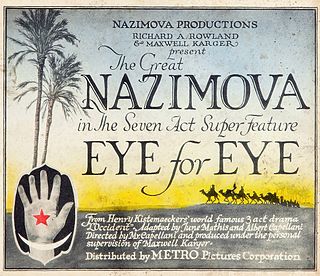
Eye for Eye is 1918 American silent drama film directed by Albert Capellani. It was produced by Richard A. Rowland and Alla Nazimova and distributed by Metro Pictures. Nazimova is also the star in a production scripted by June Mathis. A trailer of the film is currently held in the Library of Congress, and evidence has arisen that a copy may exist in Gosfilmofond in Russia.

The Redeeming Sin is a 1929 crime drama sound part-talkie film. In addition to sequences with audible dialogue or talking sequences, the film features a synchronized musical score and sound effects along with English intertitles. The soundtrack was recorded using the Vitaphone sound-on-disc system. It was produced and distributed by Warner Bros. and stars Dolores Costello. This film is a lost film.

Parisian Love is a black and white 1925 American silent romantic crime drama film directed by Louis J. Gasnier and starring Clara Bow. The film was produced by B.P. Schulberg Productions. A copy of this film still survives.

Miriam Battista was an American actress known principally for her early career as a child star in silent films. After gaining notice in Broadway theatre at the age of four, she was cast in films the same year. Her most famous appearance was in the 1920 film Humoresque in which she played a little girl on crutches. As an adult, Battista acted in Italian-language films in the 1930s, and she appeared in Broadway productions. She wrote, sang, composed music, and co-hosted a television talk show with her second husband.

War Brides is a lost 1916 American silent war drama film directed by Herbert Brenon and starring Alla Nazimova. The film marked Nazimova's debut in motion pictures.

East Lynne is a 1925 American silent drama film directed by Emmett J. Flynn and starring Alma Rubens, Edmund Lowe, and Lou Tellegen. The film is based on the bestselling 1861 Victorian novel of the same name by Ellen Wood. The scenario was written by Lenore Coffee and the film's director, Emmett J. Flynn.

The Long Trail is a 1917 American drama silent film directed by Howell Hansel and written by Eve Unsell. The film stars Lou Tellegen, Mary Fuller, Winifred Allen, Sidney Bracey, Franklin Woodruff and Ferdinand Tidmarsh. The film was released on July 23, 1917, by Paramount Pictures.

Between Friends is a 1924 American silent melodrama film based on the eponymous 1914 novel by Robert W. Chambers. The film was directed by J. Stuart Blackton and produced by Albert E. Smith. It stars Lou Tellegen, Anna Q. Nilsson, and Norman Kerry. The feature was distributed by Vitagraph Studios, which was founded by Blackton and Smith in 1897 in Brooklyn, New York. The film is lost.

William Pitt Striker Earle was an American director of the silent film era. He attended Columbia University and worked for a time as a photographer before breaking into the movie business by sneaking onto the lot of Vitagraph Company of America to observe how directors worked. After a few days of this, Earle approached the studio president and was given his first movie to direct, For the Honor of the Crew, a short about a crew race at Columbia University. He subsequently directed a number of features and shorts for Vitagraph. Later he worked with producer David O. Selznick. Earle founded his own, short-lived production company called Amex Production Corporation with J. S. Joffe, and shot the final two films of his career in Mexico.

My Son is a 1925 American silent drama film directed by Edwin Carewe and starring Alla Nazimova. Carewe produced with First National who distributed the film.
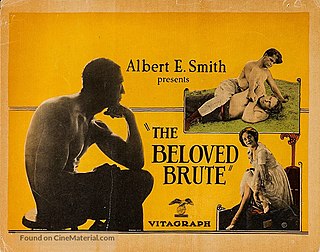
The Beloved Brute is a 1924 American silent Western film directed by J. Stuart Blackton and starring Marguerite De La Motte, Victor McLaglen, and William Russell. It is based on the 1923 novel The Beloved Brute by Kenneth Perkins. This was English-born McLaglen's first American film.
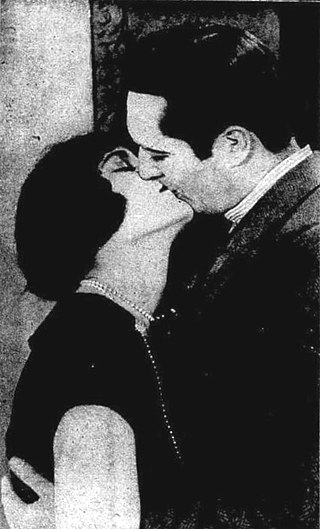
The Kiss Barrier is a lost 1925 American silent drama film directed by Roy William Neill and written by Eugenie Magnus Ingleton. The film stars Edmund Lowe, Claire Adams, Diana Miller, Marion Harlan, Thomas R. Mills, and Charles Clary. The film was released on May 31, 1925, by Fox Film Corporation.

Marian Constance Blackton was an American screenwriter and actress active primarily in the 1920s. She was sometimes credited as Marian Constance.

Lady Godiva is a 1911 American silent historical drama film directed by J. Stuart Blackton and produced by Vitagraph Studios in Brooklyn, New York. Its scenario is based on a legendary incident in the life of Godiva, Countess of Mercia, who lived in England during the mid-11th century. Allegedly, the Anglo-Saxon noblewoman rode naked—covered only by her long hair—through the streets of Coventry to protest and abolish an oppressive tax imposed on that town's residents by her husband, Leofric, Earl of Mercia. The film, copies of which survive today, stars Julia Swayne Gordon in the title role with a supporting cast including Robert Maillard, Harold Wilson, and Kate Price.
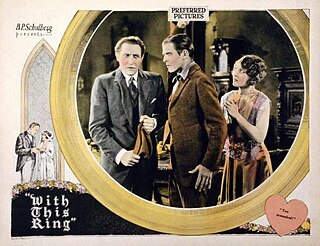
With This Ring is a 1925 American silent drama film directed by Fred Windemere and starring Alyce Mills, Forrest Stanley, and Lou Tellegen. In America it was distributed by the independent outfit Preferred Pictures while its British release was originally to be handled by Vitagraph, before that company was acquired by Warner Bros. who distributed it on the British market in 1926.



















